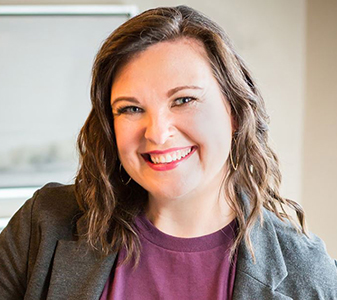Today’s most effective leadership teams are built on cognitive diversity. Teams that combine analytical minds—focused on data, structure, and precision—with creative minds—driven by vision, innovation, and storytelling—are more resilient, more innovative, and better equipped to navigate uncertainty.
However, these different thinking styles don’t always mesh easily. Miscommunication is common. Analytical leaders may see creatives as impractical, while creatives may view analysts as rigid or uninspired. When friction grows, collaboration breaks down.
To bridge the gap, leadership teams can apply the KASH Method—Knowledge, Attitudes, Skills, and Habits—to improve communication and maximize collective strengths.
K – Knowledge: Build a Shared Understanding
Knowledge is the foundation of any strong collaboration. Analytical and creative minds often operate from different mental models, assumptions, and vocabularies. This creates disconnects—even when intentions are aligned.
- Analytical thinkers may seek clarity through logic, trends, and KPIs.
- Creative thinkers often prioritize emotion, intuition, and concept development.
Solution: Create shared knowledge. That means making time to educate each other—not just on business goals but on how each side thinks. Bring creatives into data conversations early. Invite analysts into the ideation process. Establish common language and context so that all perspectives feel grounded and informed.
Example: A marketing team planning a product launch might host joint sessions where data analysts explain consumer behavior trends, and designers translate that into visual storytelling.

5 Powerful Secrets of High-Performing Leaders
✓ 4 Strategic Wins for instant clarity and execution
✓ Beat Parkinson’s Law to dominate your schedule
✓ Optimize Your Energy for unstoppable productivity
✓ Read to Lead to accelerate personal and career growth
✓ Proven Learning Method that cements breakthroughs
A – Attitudes: Cultivate Mutual Respect and Curiosity
Attitudes shape how we interpret and respond to others. One of the biggest communication barriers is a subtle judgment that one style is “smarter” or “more strategic” than the other.
True collaboration requires respectful curiosity. When leaders appreciate—not just tolerate—different perspectives, they unlock real innovation.
- Encourage team members to be curious, not critical.
- Promote a growth mindset: “What can I learn from this approach?”
- Model appreciation of different thinking styles at the leadership level.
Example: Instead of dismissing a creative idea as “too blue sky,” an analytical leader might ask, “How could we test that idea at a small scale to learn more?”
S – Skills: Strengthen Cross-Functional Communication
Even the most brilliant minds can fail to connect if they lack communication skills tailored for different audiences. Analytical minds may default to reports and charts; creatives may rely on metaphors or mood boards. Without translation, meaning gets lost.
Develop the skills to speak each other’s language.
- Analytical leaders can practice visual and narrative communication.
- Creative leaders can enhance their data literacy and structured thinking.
- Both can benefit from learning tools like storytelling with data, design thinking, or strategic communication frameworks.
Example: In leadership presentations, pair visuals (creative) with outcomes (analytical). Open with a story or vision; back it up with data and milestones.

Ready to Find Your Perfect Kashbox Coach?
Every executive and business leader has unique strengths and faces specific challenges. That’s why we offer a diverse team of experienced coaches, each with specialized expertise in different areas of leadership coaching.
Click the button below to match with a Kashbox Coaching leadership coach who can best help you unlock your full potential.
H – Habits: Build Collaboration Into the Culture
Lasting change comes from habits—how people interact day to day. It’s not enough to have one great brainstorming session or data review. Teams must make collaboration routine.
Develop daily and weekly habits that promote mutual input and real-time feedback.
- Pair analytical and creative team leads on high-priority initiatives.
- Rotate meeting facilitation between different thinking styles.
- Debrief projects together, discussing both performance metrics and creative impact.
Also, build psychological safety as a habit. Encourage respectful disagreement, reward idea-sharing, and make it safe to not always “have the answer.”
Example: A product team might have a standing habit where data leads share customer behavior patterns, and creatives suggest how the findings could influence design or messaging—creating space for both to contribute regularly.
Conclusion: Collaboration Is a Skill—Not an Accident
Analytical and creative thinkers are both essential to strong leadership. But collaboration between them doesn’t happen by chance. It requires deliberate development of Knowledge, Attitudes, Skills, and Habits—the KASH method.
When leadership teams embrace KASH:
- They create shared understanding.
- They shift mindsets toward mutual respect.
- They equip themselves with tools to bridge differences.
- And they build rhythms of collaboration that drive innovation.
The goal is not to blend everyone into one way of thinking. It’s to align different strengths toward a common purpose—where strategy meets imagination, and logic meets boldness.
When analytical and creative minds communicate well, everyone wins.

As the President of Kashbox Coaching my mission is to empower leaders by highlighting their unique strengths and unlocking their leadership potential – to develop all quadrants of their Kashbox (Knowledge, Attitude, Skills, Habits)!
For over 15 years, Hannah Kay Herdlinger has empowered individuals to unlock their full potential and design fulfilling careers and lives. She championed leadership at Sheryl Sandberg’s Lean In and Arianna Huffington’s Thrive Global.
The KASH Method, created by the founder of Kashbox Coaching, offers leaders a unique path to success and positive change. It goes beyond traditional coaching by integrating leadership development, resilience training, and the power of connection to elevate client experiences.
Hannah Kay’s passion is igniting positive and lasting transformations. Through executive, corporate, and individual coaching, she helps clients align professionally. Her journey is a testament to the transformative power of coaching. Her unwavering commitment to empowering others is evident in her own growth and the success of her clients.













